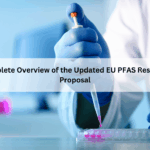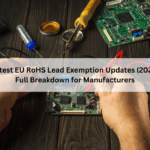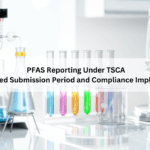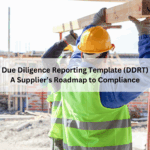The European Union’s Restriction of Hazardous Substances (RoHS) Directive, established under Directive 2011/65/EU, aims to limit the use of certain hazardous substances in electrical and electronic equipment (EEE). Annex III of this directive outlines specific exemptions for lead, acknowledging that alternatives may not yet be technically or economically viable in certain applications. As we approach the 2025–2027 period, several key lead exemptions are up for renewal or revision, impacting various sectors including electronics, automotive, and industrial manufacturing.
The expiration or modification of lead exemptions presents significant challenges for manufacturers:
- Compliance Risks: Failure to adhere to new regulations can result in legal repercussions and market access issues.
- Supply Chain Disruptions: Transitioning to lead-free alternatives may require extensive changes in sourcing, production processes, and quality control.
- Technical Barriers: In some high-performance applications, suitable lead-free substitutes are not yet available, potentially compromising product reliability.
The European Commission has proposed several updates to RoHS Annex III to address these challenges:
- Renewal of Existing Exemptions: Some lead exemptions have been extended, providing temporary relief for industries transitioning to alternatives.
- Introduction of New Exemptions: New exemptions have been added to accommodate emerging technologies and recycling initiatives.
- Clarification of Application Scope: Certain exemptions now have more defined scopes, ensuring they apply only to specific applications where no viable alternatives exist.
For instance, exemptions for lead in high-melting-temperature solders (Entry 7(a)) have been extended until December 31, 2026, with more specific sub-exemptions introduced for applications like semiconductor assembly and high-temperature lamps.
The proposed changes to RoHS Annex III lead exemptions aim to balance environmental goals with industrial capabilities:
- Environmental Protection: Gradually phasing out lead encourages the development and adoption of safer materials.
- Innovation Incentives: The need for alternatives drives research and development in material science and engineering.
- Market Adaptability: Clear regulations help industries plan and adapt, reducing the risk of non-compliance.
However, these benefits come with challenges, particularly for sectors where lead is integral to product performance. The transition to lead-free alternatives must be managed carefully to avoid compromising product quality.
ComplianceXL empowers businesses to streamline their compliance workflows, conduct swift and thorough risk assessments, and maintain precision with timely reporting making regulatory management more efficient and less burdensome.
FAQs:
1. Where can I find the most accurate and up-to-date exemption information?
The best sources are:
- The European Commission’s official RoHS website
- National RoHS competent authorities
- Compliance databases and updates from trusted regulatory services
2. Will there be future changes after 2027?
Likely, yes. The Directive is continuously reviewed in light of technological advances and environmental goals. Businesses should treat RoHS compliance as an ongoing process.
3. How can companies prepare for these changes?
Companies should:
- Monitor official RoHS updates
- Evaluate supply chains for compliance
- Invest in R&D for alternative materials
- Work with compliance consultants or legal experts
- Update technical documents and product labels
4. What happens if a company doesn’t comply with updated RoHS rules?
Non-compliance can lead to fines, legal action, product recalls, and loss of access to the EU market. Manufacturers must update product designs and documentation to meet new exemption criteria or find compliant alternatives.





